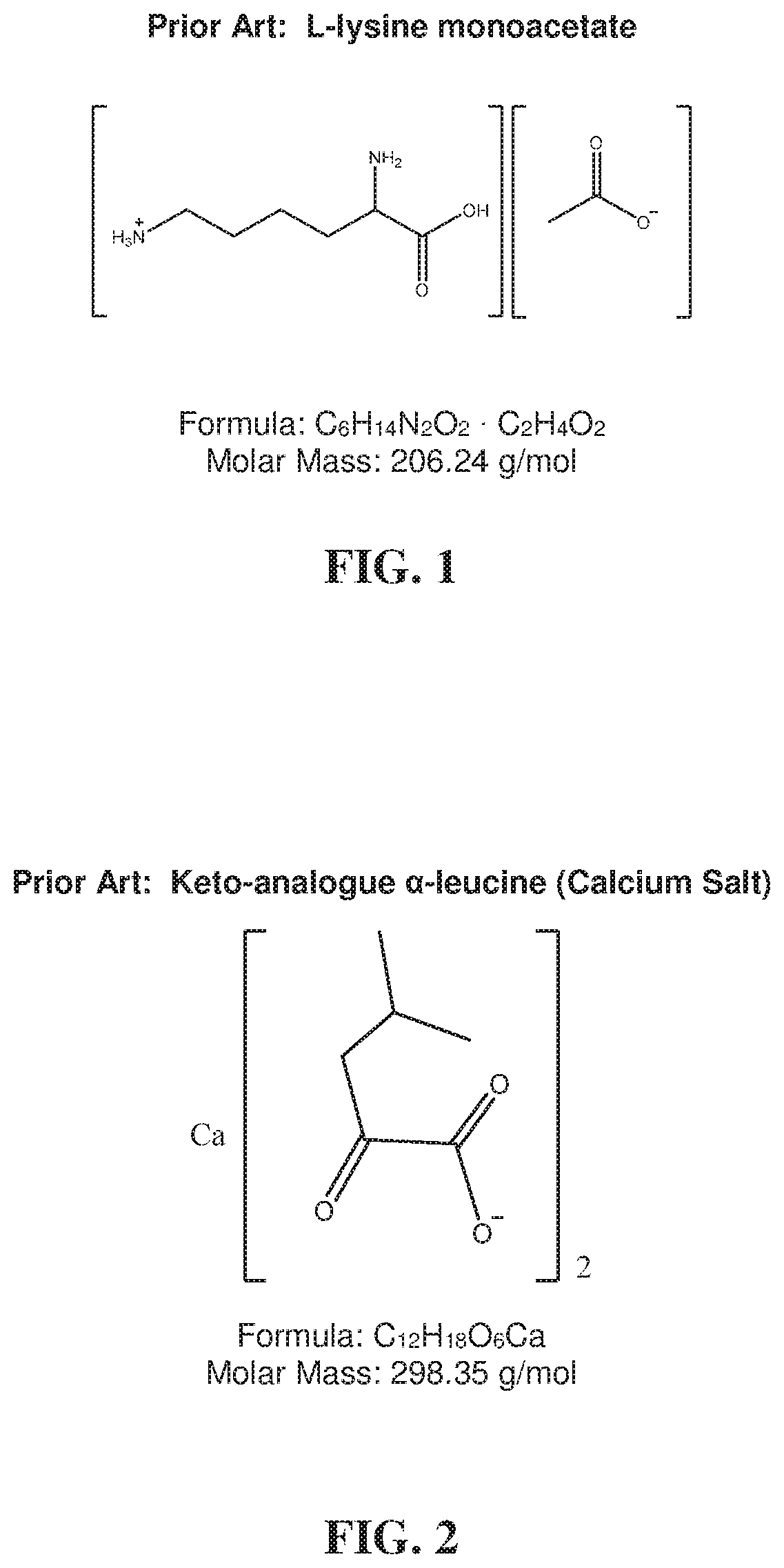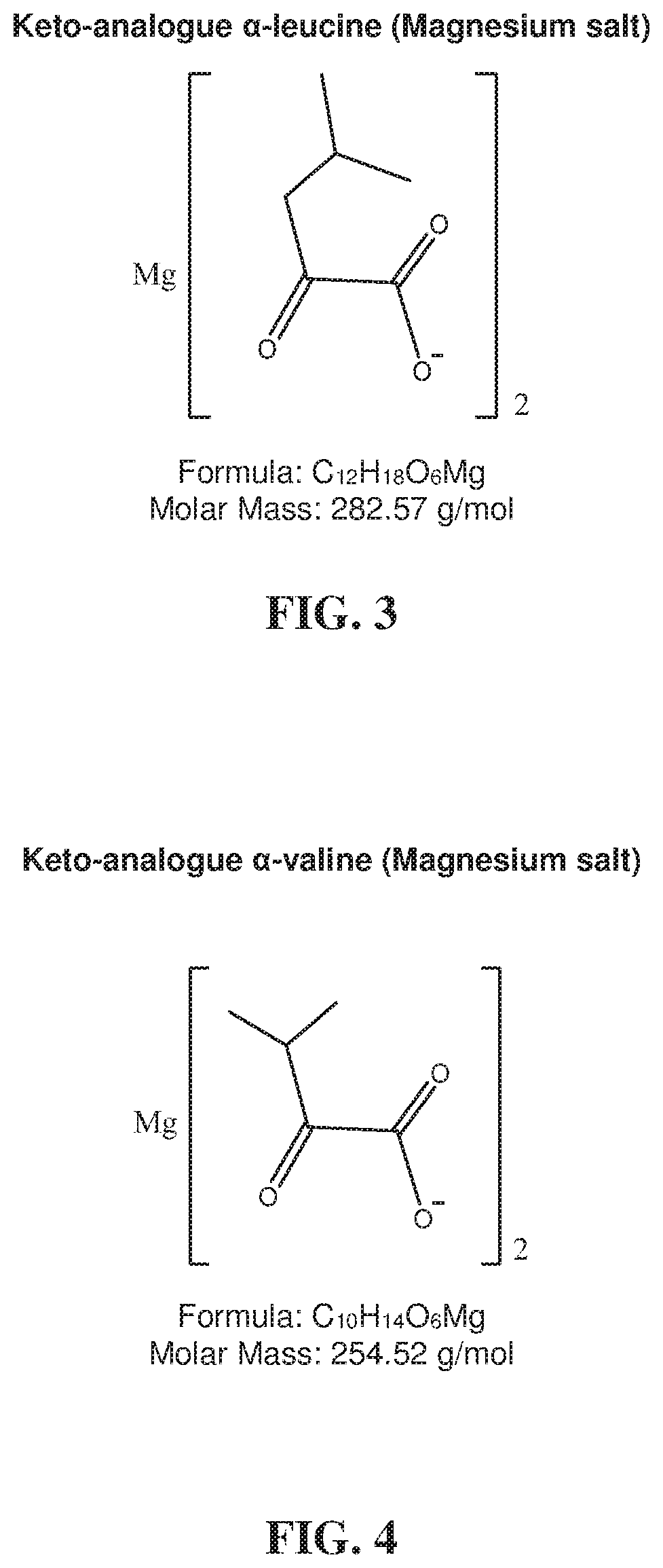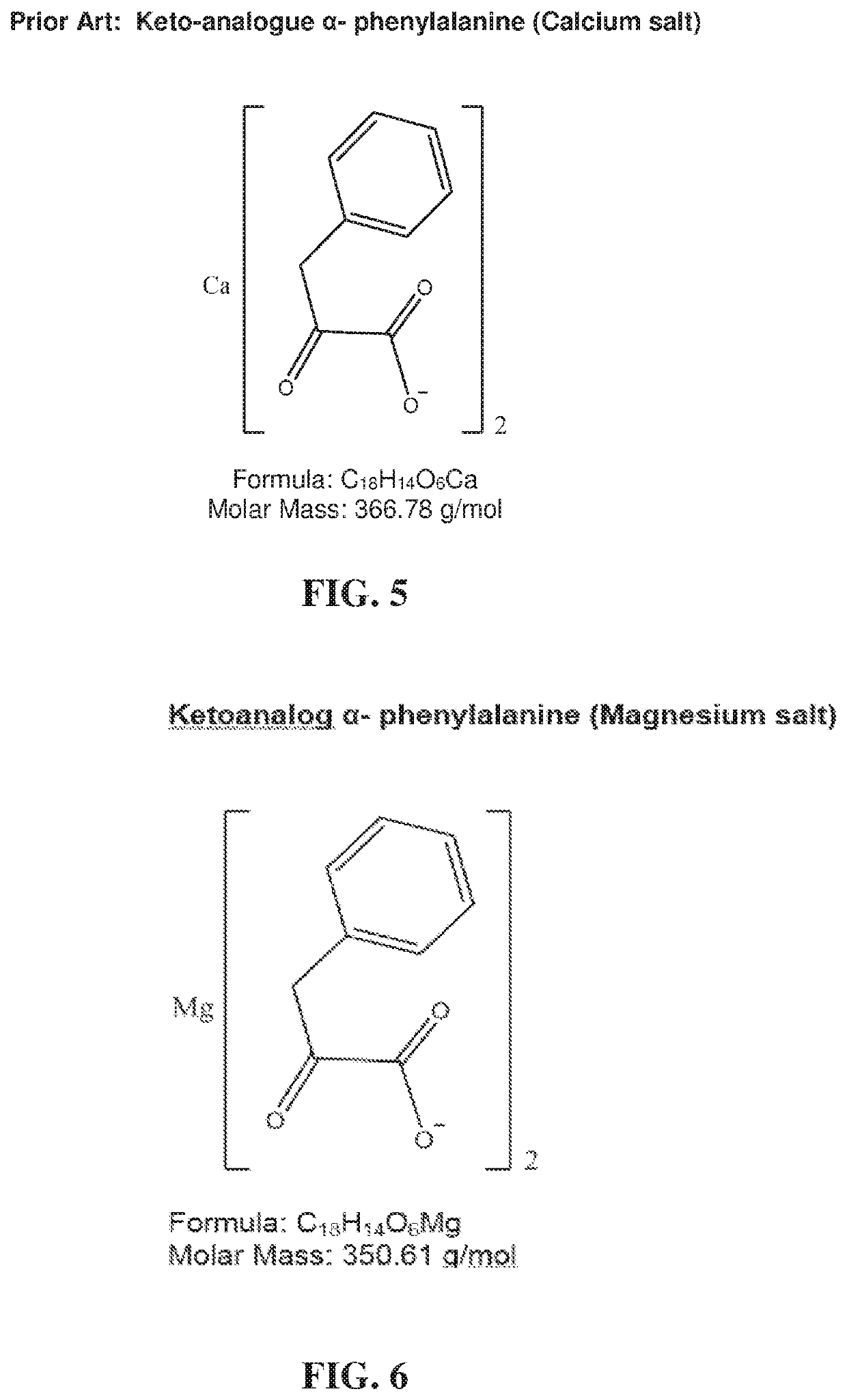Low serum albumin levels may also contribute to poor or abnormal
drug delivery in the bloodstream.
However, for many patients, traditional amino acids increase the
workload on already taxed kidneys creating more
health problems than they solve.
As serum albumin levels fall, patients are susceptible to a variety of illnesses and fall prey to comorbid diseases like
heart disease.
As serum albumin levels fall, mortality rates rise dramatically.
The prolonged chronic hypoalbuminemia contributes considerably to poor health, worse prognosis and higher mortality.
For this group,
calcium-based solutions are not viable long-term treatment option and may be harmful over the long term.
For this reason, long term
calcium based keto acids cannot be used.
The longtime frame exposes the patients to more risk than benefit.
The result of not adjusting formulation dosage by adjusting
dietary protein results in an increased protein
workload with no benefits for some patients and others will be deficient in protein
nutrition.
Current formulations do not allow patients and doctors to manage the amount or ratio of
magnesium or calcium.
If
Calcium based options are too high risk or results in new comorbid conditions, then patient must stop treatment with no other options.
This is not optimal for the majority of patients.
In these cases, low serum albumin levels may last decades.
Low serum albumin levels over periods as short as 30 days may increase mortality rates.
Routine surgeries or medical procedures can become life-threatening with greatly increased morbidity and mortality rates if serum albumin levels are lower than 4.6 mg / dl.
Patients cannot achieve normal serum albumin levels or achieve protein
nutrition through
normal diet.
The combination of these factors leads to a permanent and progressive impairment in the body's ability to digest and process dietary protein effectively.
In this situation,
uremia is lessened, but at the expense of long-term health.
Low protein diets without supplementation are not safe for any patients as albumin and
Fetuin A levels decrease even further.
This
narrow range is very difficult for kidney patients to maintain as kidney disease progresses.
A safe long-term method is needed to treat and manage protein malnutrition and increase serum albumin levels to the normal ranges, but the solutions cannot create conditions that contribute to the acceleration of kidney or
heart disease or any other comorbid conditions.
For this reason, these formulations are questionable.
Single factor treatment plans will not work for multifactorial conditions.
The results are considered inconclusive and was not proven as a treatment.
No keto
amino acid treatment is available to U.S. patients at this time.
This is why existing formulations cannot be used over the long term or for patients with stage 2, 3 and 4 kidney disease.
It has been proven that calcium supplements increase
heart disease risk.
It would be impossible for patients to stay below 1,200 mg per day if consumption through supplements is already averaging 1,000 to 1,200 mg.
Dietary management of calcium is impossible if the supplement calcium load is this high to start with.
To make matters worse, there is no option to control supplemental calcium intake and maintain protein
nutrition; the patient must reject treatment or accept the risks of accelerated heart disease.
There is currently no option that allows patients to manage supplemental calcium intake while still using keto acids as a treatment method.
This fact leaves patients with nothing but bad choices that will increase mortality rates.
Reduce keto and
amino acid intake to 50% of the required
dose leads to protein malnutrition.
Managing calcium is very tough for patients.
Low protein levels from impaired
amino acid metabolism leads to chronic low levels of
Fetuin A.
Low protein diets are not safe for kidney patients unless supplemented with a safe alternative protein source as the formulations in this paper.
Calcium based therapies do nothing to treat inflammation.
Eating higher amounts of these products to increase
protein intake can cause increased inflammation and increased
proteinuria.
Taking a
protein supplement to treat low serum albumin without treating inflammation at the same time will not work in the majority of patients.
These waste products are extremely toxic and lead to death if not removed by dialysis.
Diseased or aging kidneys' ability to remove these wastes is impaired leading to uremia.
However, this reduction is not high enough for all patients to benefit.
These patients are already consuming more protein than desired, thus incurring a significant
nitrogen load, yet still suffering from low albumin levels.
Diseased or aging kidneys cannot produce enough
ammonia to offset the higher acid diets and keep PH in the
normal range.
However, supplementation with keto amino acids significantly reduce
recovery time and increase endurance.
Pure keto acids greatly reduce hyperfiltration by reducing the need for the kidneys to
increase blood pressure, which further damages the kidneys.
Low albumin levels contribute to
edema and swelling.
Edema and swelling can contribute to mortality rates in kidney disease patients.
However, controlling
phosphorus using calcium-based binders may still increase heart disease.
When albumin levels are low,
drug delivery can be impaired.
Dosage problems Past recommendations do not take into account patients reduced kidney function / stage of kidney disease, dietary
protein intake or input from current albumin levels.
This is inadequate and unlikely to lead to increased albumin except in the most mild cases of kidney disease or leads patients to taking very
high doses without guidance.
None of these treatments will work in isolation.
For example, raising Fetuin A may be ineffective if calcium intake is 1,500 to 2,000 mg a day.
Past treatments were one factor treatments and have not been proven effective for this reason.
However, these foods have no antioxidants and increase inflammation.
Over the counter or prescription anti-inflammatory supplements / drugs have not proven effective in increasing albumin levels.
Treating uremia or inflammation in isolation like past approaches have little if any chance for success.
Past formulas and methods do not address primary drivers of illness in kidney patents like hypercalcemia, early stage kidney disease (2, 3, 4) inflammation, heart disease /
vascular calcification,
acidosis and other conditions.
Past options may actually increase risk for some patients instead of reducing risks over the long term.
Sodium salts are not allowed when most patients are on a salt restricted diet and salt contributes to high
blood pressure, the second largest cause of kidney disease.
Potassium salts cannot be used as most kidney patients are on a
potassium restricted diet and have trouble keeping
potassium levels low.
Zinc and
iron salts cannot be used as the daily recommended daily allowance is so low.
In the past, it was not cost effective to produce keto acids of tyrosine and tryptophan.
Past formulations do not allow targeting of different stages of kidney disease or comorbid conditions.
Dietary calcium does not increase the risk of heart disease; but calcium supplements are responsible for the increased heart
disease risk.
The optimal ratio of calcium to
magnesium has not been established for kidney patients and different stages of kidney disease.
Impaired kidney function leads to
poor control of magnesium levels.
To further complicate treatment, these needs will change as kidney disease progresses yet current therapies do not allow for any manipulation of calcium and magnesium intake as the disease progresses it becomes harder and harder for patients to control these levels.
A one size fits all model cannot provide the correct nutrition as the disease progresses and a patient's needs change.
Patients in poor health and impaired kidney function cannot be expected to successfully manage these issues without help.
This has not been possible before.
Standards formulations will never be optimal for most patients.
 Login to View More
Login to View More 


